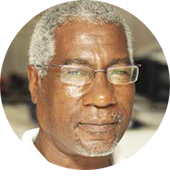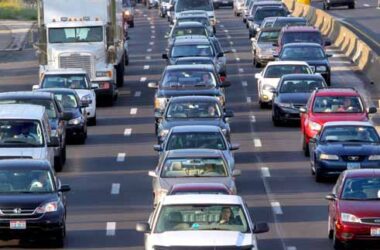
Every now and then, unfortunate events reveal unfortunate realities that cause unfortunate decisions that do not redound to good fortune in how governments and people view each other.
Take the case of the way the latest Caribbean natural man-made disasters have again revealed how the rest of the world views the region and its people – and how Caribbean people view each other in times of distress.
The April 9 La Soufriere volcano eruption in St. Vincent and the Grenadines was not sudden, having been long predicted by the volcanologists attached to The UWI’s Seismic Research Center (SRC) and the US Geological Survey (USGS) – as far back as December 2020 when the volcano that last erupted 42 years ago (1979) started acting-up again.
But three weeks later, world response has been slow: neither the USA, UK, Canada, Japan or the European Union (EU) have committed the equivalent of even one million US dollars to assist the 104,000 people on the small multi-island state of 133 square miles (344 square kilometers).
Some 20,000 people were evacuated from the northern half of the main island and relocated to shelters in the southern part in crowded conditions without normal facilities and supplies, needing water and threatened by incessant hails of ash, in conditions that defy Social Distancing and invite COVID-19.
Another 12,000 in the South have also been directly affected, totaling to over one-third of the en-tire population, many of who have also been evacuated to neighboring islands like Saint Lucia and Grenada.
Like with every national natural calamity of this nature – with the volcano still boiling inside and not likely to go quiet for another year – then people’s needs are immediate, for emergency supplies including water, food, medicines, doctors, places to relocate, emergency shelters, psychological care, etc.
But the initial responses from the world’s richest nations have been paltry, to say the least: 200,000 Pounds from the UK, 200,000 Euros from the EU, undetermined amounts from the USA and Can-ada and $300,000 from Taiwan, which has diplomatic ties with St. Vincent and the Grenadines.
Per head-of-population, those ‘chicken feed’ sums will not help much at a time when the most help is needed fastest: people are choking on volcano dust in crowded shelters in numbers too large for the national and regional emergency management entities to manage comfortable.
Coming in the midst of the COVID-19 crisis, the volcano’s latest eruption more than doubled the emergency pressures for the Vincentian government, which, within days of the eruption, appealed for international assistance through the Organization of Eastern Caribbean States (OECS).
But while the world’s richest nations pondered and wondered over how much to give when and by what means, Caribbean neighbors, steeled by repeatedly having had to help each other in times of crisis following hurricanes and other natural disasters in the past four decades, have automatically opened-up their hearts and homes to Vincentians.
Governments too, with the small Caribbean Community (CARICOM) and OECS member-state of St. Kitts and Nevis pledging one million Eastern Caribbean (EC) dollars (or US $368,000), while neighboring Saint Lucia has become a hub for shipment of supplies and personnel from other Caribbean states.
Saint Lucia’s two air and sea ports have served as a veritable bridge of solidarity, with supplies from northern OECS states like Antigua and Barbuda, St. Kitts and Nevis and Montserrat (where a similar eruption took place in 1995).
Emergency supplies and personnel, including six doctors, also left Saint Lucia last week from Venezuela and Cuba.
The slow response of the richest countries is indeed worrying to Vincentians and their Caribbean neighbors, and the fear is, now that the COVID crisis has overcome India, world attention will now be focused on saving lives in the most populous country on earth instead of on one of the smallest islands with one of the smallest populations in the Caribbean.
Already, the Biden administration has said it will send 60 million doses of AstraZeneca that have been lying in waste in the US because the Center for Disease Control (CDC) will not allow its dis-tribution in America, back to India where it was produced – as a gift.
The US has also released previously prohibited raw material exports to India to help it produce more vaccines and the UK has sent other emergency equipment and everything is being done to help India, despite its problem at least a million times more difficult to address with results, than St. Vincent.
India’s Health Ministry on Monday revealed that it administered 141.9 million doses in the first 100 days of the world’s largest vaccination campaign, which is expected to immunize 1.35 billion people in the country.
Authorities aim to provide two doses of vaccines to 300 million people by the end of July. For the past two weeks, however, the number of daily vaccinations has declined, casting doubt on the feasibility of reaching this target.
On Monday, authorities vaccinated only 995,288 people, a figure much lower than the 3.7 million citi-zens vaccinated on April 12. This comes at a time when India recorded 352,991 new infections and 2,812 deaths in a single day.
India’s vaccine production system is also stretched to the limit, said Adar Poonawalla, the executive director of the Serum Institute of India (SII), the world’s largest vaccine manufacturer and producer of the Covishield vaccine.
SII currently produces about 70 million doses a month but is looking to increase its capacity to 100 million after receiving government funding.
On Sunday, the United States announced the “immediate” shipment of active ingredients to manufacture vaccines, the export of which it had previously blocked.
But no such luck for St. Vincent 19 days after the volcano erupted, with the world’s biggest and richest countries yet to make their minds up as to which will be the first to contribute one million dollars – whether US or EC – to help 104,000 people navigate the after effects of yet another volcano eruption in the midst of their efforts to tackle COVID-19.
It’s just another lesson in world history — but certainly not a just one – about how the richest countries in the world normally treat poor ones, as already seen in how the majority of the world’s population in the poor and developing countries depending on COVAX vaccines continue to be treated, while the rich countries buy-off all the vaccines.









